Today’s Current Affairs: 10th May 2025 for UPSC IAS exams, State PSC exams, SSC CGL, State SSC, RRB, Railways, Banking Exam & IBPS, etc
Table of Contents
HAROP Drones:
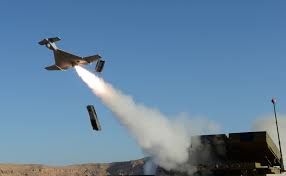
Indian armed forces recently deployed Israeli-origin Harop drones to carry out precision strikes on air defence systems in Pakistan as part of their ongoing ‘Operation Sindoor’.
- The Harop drone, developed by the MBT Missiles Division of Israel Aerospace Industries (IAI), belongs to a class of weapons known as loitering munition
- These drones are designed to hover in a designated area for up to nine hours, identify hostile targets, and destroy them by crashing into them with a built-in explosive payload.
- Unlike conventional UAVs, which return after surveillance missions, loitering munitions serve a dual purpose: reconnaissance and attack.
- The Harop is equipped with an electro-optical (EO) or infrared (IR) seeker to detect, track, and engage static or mobile threats, including radar systems, missile launchers, and command posts.
- Capable of autonomous operation with human oversight, the Harop offers a man-in-the-loop control mode, allowing the operator to make final decisions before impact.
- It is also equipped with abort capability, allowing for mission cancellation mid-flight to avoid collateral damage.
INS Vikrant: Deployed To the Arabian Sea

Amid surging tensions between India and Pakistan, especially after Pakistan’s attempted aerial strikes on Indian territory, the Indian Navy has deployed its most formidable naval asset — INS Vikrant — to the Arabian Sea.
- INS Vikrant is India’s first indigenously designed and manufactured aircraft carrier.
- The ship has been designed in-house by the Indian Navy’s Warship Design Bureau and constructed by M/s Cochin Shipyard Limited.
- It was commissioned into the Indian Navy in 2022.
- It has an overall indigenous content of 76%.
- It strengthens the country’s standing as a ‘Blue Water Navy’—a maritime force with global reach and capability to operate over deep seas.
- With it, India also joined the elite group of nations–the US, Russia, France, the UK, and China–who are capable of designing and constructing aircraft carriers.
- With a length of 262 metres and a width of 62 metres, the massive aircraft carrier boasts 14 decks, making it as tall as a 14-storey building.
- It can house over 1,500 personnel.
- Its full-load displacement is 43,000 tonnes.
- The ship is powered by four Gas Turbines totaling 88 MW of power and has a maximum speed of 28 knots.
- Endurance: 8,600 miles (13,890 kilometres)
- It is capable of functioning independently for up to 45 days at sea.
- It is capable of operating an air wing consisting of 30 aircraft comprising MIG-29K fighter jets, Kamov-31, MH-60R multi-role helicopters, in addition to indigenously manufactured Advanced Light Helicopters (ALH) and Light Combat Aircraft (LCA) (Navy).
Chirality:
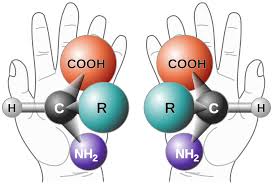
Researchers discovered a chiral quantum state in topological Kagome lattice material (KV₃Sb₅), a material previously believed to be non-chiral, marking a landmark moment in condensed matter physics.
Key Findings:
- Spontaneous symmetry breaking was observed in the form of a charge density wave (CDW) in KV₃Sb₅.
- When cooled to 4 Kelvin, the material displayed differential response to right- and left-handed circularly polarised light, proving broken inversion and mirror symmetry.
- This is the first confirmation of an intrinsic chiral charge order in a bulk topological quantum material.
- Chirality refers to a property of an object that is not superimposable on its mirror image. It is also known as “handedness”.
- It is ubiquitous, found in amino acids, DNA’s double helix, and spiral patterns in biological organisms.
- Left-handed (L) and right-handed (D) forms are common in molecules and are essential in biochemistry and quantum physics.
- KV₃Sb₅ is a bulk quantum material with a Kagome lattice structure, composed of corner-sharing triangles.
- The Kagome pattern, originally from Japanese basket-weaving, is a platform to explore exotic quantum phenomena.
- A newly developed tool, the Scanning Photocurrent Microscope (SPCM), was used to detect nonlinear electromagnetic responses in the material.
- This is distinct from STM (Scanning Tunnelling Microscope), which provides atomic-scale images.
- The SPCM detected handedness in photocurrent, confirming the presence of circular photogalvanic effect (CPGE), a signature of chirality.
IMDEX Asia 2025:

INS Kiltan, an Indian Naval Ship, arrived in Singapore to participate in IMDEX Asia 2025, held at the Changi Exhibition Centre.
- IMDEX Asia is a premier maritime and defence exhibition in the Asia-Pacific region, held biennially in Singapore since its inception in 1997.
- It serves as a global platform for navies, coast guards, and maritime defence industries to:
- Showcase naval platforms and systems
- Debut cutting-edge maritime technologies
- Engage in high-level policy and strategic dialogue
- The International Maritime Security Conference (IMSC) is a key part of IMDEX.
- It was established in 2009.
- Jointly organised by the Republic of Singapore Navy (RSN) and the Rajaratnam School of International Studies (RSIS).
- It brings together navy chiefs, coast guard heads, policymakers, strategic analysts, and maritime stakeholders.
- The conference focuses on enhancing mutual security, maritime domain awareness, and cooperative solutions for challenges in the global maritime commons.
Kosmos 482:
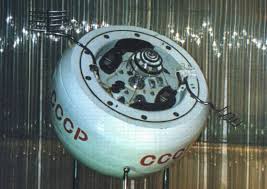
A part of the Soviet spacecraft Kosmos 482, launched on March 31, 1972, is expected to re-enter Earth’s atmosphere around May 10, 2025, after orbiting the planet for over five decades.
- Kosmos 482 is a Soviet-era Venus lander, launched on March 31, 1972 as part of the Venera space programme.
- It was meant to land on Venus, but a rocket’s upper stage malfunction left it stranded in Earth orbit.
- After more than 50 years in space, a 500-kg lander module is expected to make an uncontrolled re-entry into Earth’s atmosphere around May 10, 2025.
- The upper stage of the launch vehicle shut down prematurely due to a timer malfunction.
- This prevented the spacecraft from escaping Earth’s gravity and sent it into a low Earth orbit
- The main spacecraft eventually burned up in the atmosphere, but the lander module continued orbiting.
- The Venera programme (1961–1984) was a Soviet interplanetary mission series aimed at exploring Venus.
- It launched 28 probes, of which 13 entered Venus’s atmosphere and 10 landed on the surface
Persian Gulf : Renamed
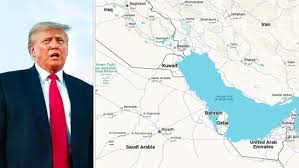
The US President Donald Trump plans to officially rename the ‘Persian Gulf’ as the ‘Arabian Gulf’ during a visit to Saudi Arabia, aligning with the preferences of Arab Gulf nations.
- The term ‘Persian Gulf’ has been used consistently since the 16th century, widely recognised in historical records, international treaties, and cartographic references.
- Arab states, especially Saudi Arabia and the UAE, prefer the term ‘Arabian Gulf’, using it in their national maps and documents.
- In 2012, Iran threatened to sue Google for not labelling the water body on its maps, asserting its historical naming rights.
- The Persian Gulf is a marginal sea of the Indian Ocean, located in Western Asia, and is a vital geopolitical chokepoint.
- It is connected to the Arabian Sea via the Strait of Hormuz, one of the world’s most strategic maritime passages for global oil shipments.
- It spans ~251,000 km², with an average depth of 50 meters and maximum depth of 90 meters.
- The coastline stretches ~5,117 km, with Iran having the longest stretch (~1,536 km).
Anak Krakatau Volcano:
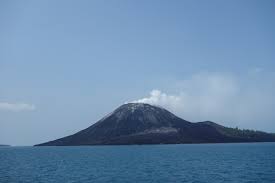
Anak Krakatau’s deadly 2018 collapse was preceded by years of unnoticed ground movement, now exposed through satellite radar analysis.
- Anak Krakatau (meaning “Child of Krakatau”) is a stratovolcano located in the Sunda Strait, between Java and Sumatra in Indonesia.
- It is a part of the Ring of Fire, a chain of volcanoes in the Pacific Ocean.
- It emerged from the sea in 1927 and is the offspring of the catastrophic Krakatoa eruption of 1883.
- Over the following years, frequent strombolian eruptions resulted in growth of the volcano.
- It sits above multiple magma chambers.
- It has been the site of frequent eruptions. It has had at least nine episodes of activity since 1963, most lasting less than one year.
- On 22 December 2018, an eruption led to the collapse of the southwestern flank of the volcano, with the resulting landslide generating a tsunami that caused devastation along the nearby coasts of southern Sumatra and west Java.
Piprahwa Gems:
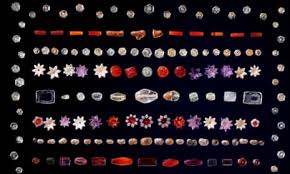
Buddhist scholars and monks from around the world expressed concerns over the auction of ancient Piprahwa Gems which they say were widely considered to be imbued with the presence of the Buddha.
- The Piprahwa Gems denote the cache of jewels discovered interred in a stupa, or burial monument, in Piprahwa, located in present-day Uttar Pradesh.
- According to an inscription carved into one of the reliquaries, the stupa contained the remains of the Buddha himself.
- The gems were believed to have been combined with some of the cremated remains of the Buddha, who died around 480 BC.
- They were excavated by William Claxton Peppe, a British colonial engineer, after excavating part of his estate in 1898. The site was the first credible find of the Buddha’s relics in modern times.
- The British crown claimed Peppé’s discovery under the 1878 Indian Treasure Trove Act, and the bone and ash fragments were gifted by the British to King Chulalongkorn of Siam, now Thailand.
- The Piprahwa gems include amethysts, coral, garnets, pearls, rock crystals, shells, and gold, either worked into pendants, beads, and other ornaments, or in their natural form.
- Most of the 1,800 gems went to what is now the Indian Museum in Kolkata.
- But Peppe was permitted to retain about a fifth of them, some of which were described as “duplicates” by British colonial administrators at the time.
SCALP Missile:

In Operation Sindoor, SCALP missiles were reportedly launched from Indian Rafale jets to strike deep-terror infrastructure in Pakistan and PoK.
- The SCALP missile, also known by its British name, ‘Storm Shadow’, is a long-range, air-launched cruise missile.
- It is conventionally armed and used for deep strike missions against high-value, fixed or stationary targets.
- Its full name, Systeme de Croisiere Autonome a Longue Portee, underscores its role as an autonomous, extended-range strike weapon.
- It is jointly developed by the United Kingdom and France.
- It is also in service with the air forces of Egypt, India, Italy, Greece, Saudi Arabia, Qatar, and the United Arab Emirates (UAE).
- It has a range of around 500 km.
- Weighing 1,300 kg, it carries a 450 kg conventional warhead capable of penetrating hardened bunkers.
- It is around five metres long and has a wingspan of three metres.
- Flying at subsonic speeds (around Mach 0.8) and low altitudes, it uses terrain-following navigation, GPS/INS guidance, and infrared terminal homing for high accuracy.
- These features allow it to fly at low altitudes to evade enemy radar
- As it approaches its target, the missile’s infrared guidance system compares the target with preloaded images to ensure high accuracy and minimise collateral damage.
- Designed for stealth and precision, the SCALP is capable of operating in any weather conditions.
- Launch platform: India integrates SCALP with the Rafale fighter jets, which are currently operated by the Indian Air Force.
Snow Leopard: In News
A group of tourists on a road trip through Himachal Pradesh’s Spiti Valley had a once-in-a-lifetime encounter with one of nature’s most elusive predators, a snow leopard.It is a medium-sized big cat that resides in the rugged terrains of Central and South Asia.
Scientific Name: Panthera unciaDespite a range of over 2 million sq.km., scientists estimate that there may only be between 3,920 and 6,390 snow leopards left in the wild.Conservation status: IUCN Red List: Vulnerable, CITES: Appendix I
Wildlife (Protection) Act 1972:Schedule IAs they are rarely spotted, they are generally known as the ‘ghost of the mountains’.
Delhi Cabinet has approved a project to conduct cloud seeding trials:
The Delhi Cabinet has approved a project to conduct cloud seeding trials aimed at addressing air pollution and water scarcity. Cloud Seeding: is a weather modification technique that enhances precipitation by dispersing chemicals like silver iodide, potassium iodide, or dry ice into clouds, serving as nuclei for water droplet formation, leading to rainfall. It can help combat air pollution, especially during periods of high Air Quality Index (AQI) readings. Cloud seeding may increase water availability and result in economic, environmental, and human health benefits.
300th Birth Anniversary of Ahilyabai Holkar:
The Maharashtra Cabinet held its maiden meeting outside Mumbai in Chondi to mark the 300th birth anniversary (31st May 2025) of Malwa Queen Ahilyabai Holkar and to honor her legacy.Ahilyabai was born on 31st May 1725 in Chondi, Ahmednagar (Maharashtra), her father, Mankoji Rao Shinde, was the village head. She was married to Khanderao Holkar in 1733, the son of Malhar Rao Holkar, the ruler of Malwa and the founder of the Holkar dynasty. Ahilyabai was widowed in 1745 after Khanderao died in the siege of Kumher Fort. Malhar Rao Holkar prevented Ahilyabai from committing sati and trained her in military and administrative matters.After the death of Malhar Rao Holkar in 1766 and her son Male Rao Holkar in 1767, Ahilyabai Holkar took charge of Malwa and became the ruler of Indore in 1767. She appointed Tukoji Rao Holkar as army commander and made Maheshwar in Madhya Pradesh the Holkar dynasty’s capital.
Punjab-Haryana Water Sharing Dispute:
Punjab opposes the Bhakra Beas Management Board (BBMB)’s decision to release an additional 4,500 cusecs of water to Haryana.Meanwhile, Haryana has threatened to move the Supreme Court to secure its share, escalating a decades-old dispute over sharing the water of Bhakra Nangal Dam. Haryana demanded 8,500 cusecs from the Bhakra-Nangal project—4,500 cusecs more than its current allocation. Punjab refused, forcing the BBMB to intervene.In a BBMB meeting, Haryana, Rajasthan, and Delhi voted in favor of releasing extra water.Punjab has refused to open additional sluice gates, leading Haryana to approach the Supreme Court. Role of BBMP: Before the division of Punjab in 1996, the Bhakra-Nangal project was managed by Punjab. In 1966, the Bhakra Management Board (BMB) was formed under the Punjab Reorganisation Act, 1966 to oversee the project, ensuring it benefited Punjab, Haryana, and Himachal Pradesh.
RBI Slaps Penalties on SBI and Jana Small Finance Bank for Regulatory Lapses:
The Reserve Bank of India (RBI) has imposed monetary penalties on two banks — State Bank of India (SBI) and Jana Small Finance Bank — for deficiencies in compliance with banking norms. The action underlines the central bank’s strict approach toward ensuring discipline and customer protection in India’s financial sector.The RBI announced on May 9, 2025, that it has imposed: A penalty of ₹1.72 crore on SBI and A penalty of ₹1 crore on Jana Small Finance Bank. These penalties are for non-compliance with specific directives related to loans, customer liability, and regulatory provisions under the Banking Regulation Act, 1949.
Uttar Pradesh Partners with World Bank to Launch UP AGREES & AI Pragya Initiatives:
Uttar Pradesh Chief Minister Yogi Adityanath, in the presence of World Bank President Ajay Banga, launched two transformative initiatives — UP AGREES and AI Pragya — aimed at revolutionizing agriculture and promoting digital skill development across the state. These World Bank-supported schemes target the twin goals of enhancing rural productivity and preparing the youth for a digital future, contributing to UP’s vision of becoming a $1 trillion economy.
La Prensa Honoured with UNESCO Press Freedom Prize Amidst Government Repression:
Nicaragua’s century-old newspaper La Prensa has been awarded the 2025 UNESCO/Guillermo Cano World Press Freedom Prize. Despite facing escalating repression from the Ortega-Murillo regime—including arrests, exile, and asset confiscation—La Prensa has continued its fearless reporting, championing truth and accountability in a country where press freedoms have dramatically eroded.
BrahMos Missile Production to Begin in Lucknow:
Uttar Pradesh will mark a historic milestone in its defence manufacturing journey with the inauguration of the BrahMos missile production unit in Lucknow. Set up by BrahMos Aerospace with an investment of ₹300 crore, this facility is poised to produce the world’s most powerful supersonic cruise missile. The establishment of this unit reflects India’s growing strength in defence manufacturing and its commitment to bolstering national security.
World Migratory Bird Day Revealed Theme For 2025:
World Migratory Bird Day (WMBD) has revealed its 2025 campaign theme: “Creating Bird-Friendly Cities and Communities.” The campaign will emphasize sustainable urban planning and community-based efforts that protect migratory bird species amid rapid urbanization. With increasing pressure on natural ecosystems due to expanding cities, WMBD 2025 aims to promote harmony between humans and migratory birds across both urban and rural landscapes




